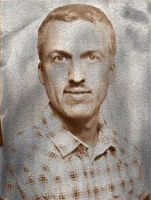Fritz began photographing as a teen, carrying his Kodak 110 Instamatic around on a US tour with his father at age 14, in their little blue Datsun B210. Twenty-five years later, he continues to explore the world, camera in hand. In the intervening years, Fritz acquired a BFA in Photography; won numerous awards and grants for his work; enjoyed artist residencies in various places; had photographs published, collected, and shown in galleries and museums; wrote articles and essays for various publications; lectured and taught workshops on photography and the artistic life; and balanced both commercial and fine art practices. He also loves to travel. He is constantly looking for new ways to approach the world through art. Portland, Oregon is his home, along with his wife and daughter and their bright orange house.
About Astra Velum: April, a freckled woman in this series, told me a story from her childhood: One day after playing outside, her grandmother asked her to go wash up. She went to the bathroom and did so, but grandma wasn’t satisfied. “Your face isn’t clean! Go scrub it some more!” The young girl was distraught, for all that was left on her skin were her freckles, and no amount of scrubbing would make them go away. In a world that flaunts flawlessness as the ideal, can we find real beauty in the blemishes? More than once, while photographing for this series, women thanked me for making something beautiful out of what they often viewed as an imperfection. At its essence, Astra Velum explores the beauty of flawed human skin, with its freckles and scars, overlaid upon us like a thin veil of stars. This series is hand-printed by the artist as a limited edition set of photogravures.
Selected Books on

